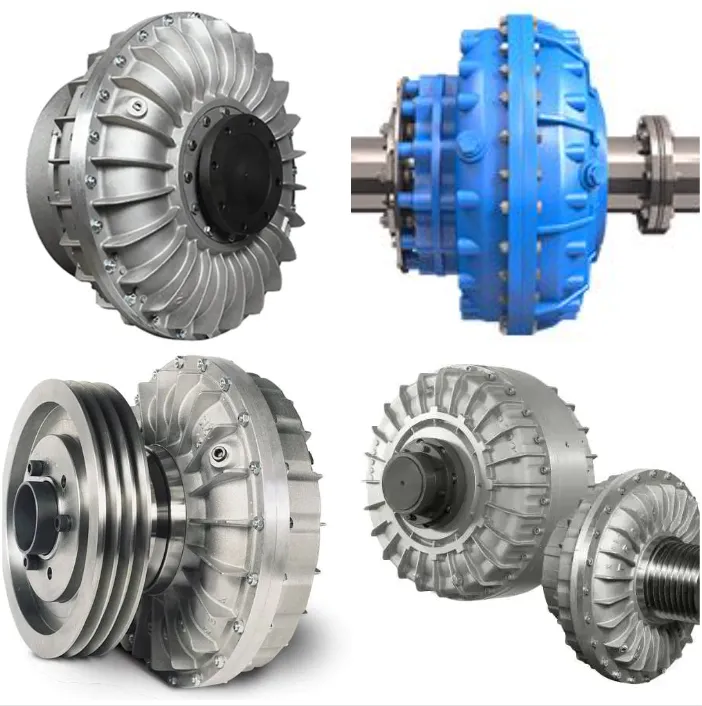Hydraulic Coupling for Automotive
What is a Hydraulic Coupling?
A hydraulic coupling, also known as a fluid coupling, is a hydrodynamic device used to transmit rotational power by means of fluid dynamics. It is commonly employed in automotive drive systems to allow for flexible power transfer between the engine and the transmission.
How Does a Hydraulic Coupling Work?
The operation of a hydraulic coupling is predicated on the movement of a fluid. When the pump impeller (connected to the engine) rotates, it converts mechanical energy into kinetic energy, which is carried by the fluid to the turbine runner (connected to the transmission). This process allows for a smooth transfer of power, minimizing shocks and vibrations.
Benefits of Using Hydraulic Couplings in Automotive
Hydraulic couplings offer several advantages in automotive applications, including smooth power transmission, protection against overloads, and a reduction in torsional vibrations. These benefits enhance the overall performance and longevity of automotive drive systems.
Components of a Hydraulic Coupling
A typical hydraulic coupling consists of three main components: the pump impeller, the turbine runner, and the fluid medium. The design may also include a casing to contain the fluid and other ancillary components for controlling fluid flow.
Application in Automotive Industry
In the automotive industry, hydraulic couplings are primarily used in automatic transmissions and torque converters. They play a critical role in ensuring smooth gear changes and efficient power delivery from the engine to the wheels.

What is the Function of Hydraulic Coupler?
A hydraulic coupler serves multiple functions in a mechanical system:
- Power Transmission: Transfers rotational power between the engine and the transmission.
- Shock Absorption: Minimizes shocks and vibrations during power transmission.
- Overload Protection: Provides a safety mechanism by slipping under overload conditions.
- Soft Start Capability: Allows for smooth acceleration and deceleration, preventing abrupt starts and stops.
- Energy Efficiency: Enhances the overall efficiency of the drive system by optimizing power flow.

What are the Two Types of Fluid Coupling?
Fluid couplings come in two primary types:
- Constant-Fill Fluid Couplings: These couplings have a fixed amount of fluid, resulting in a constant torque transmission. They are simpler in design and commonly used in systems where torque variation is minimal.
- Variable-Fill Fluid Couplings: These couplings allow for the adjustment of fluid volume, enabling variable torque transmission. They are used in more complex systems requiring precise control over power delivery.

How Do Hydraulic Quick Couplers Work?
Hydraulic quick couplers are designed for rapid connection and disconnection of hydraulic lines. They function by using a locking mechanism, typically involving a spring-loaded sleeve, which securely fastens the coupler halves together. When the sleeve is retracted, the coupler releases, allowing for quick and efficient changes to the hydraulic system.
Choosing the Right Hydraulic Coupling
When selecting or customizing a hydraulic coupling, several parameters and conditions must be considered:
- Torque Requirements: Determine the maximum and operating torque levels to ensure the coupling can handle the load.
- Speed Range: Evaluate the rotational speed range to match the coupling’s performance characteristics.
- Fluid Type: Select a compatible fluid medium that can operate efficiently within the system’s temperature and pressure conditions.
- Environmental Conditions: Consider factors such as temperature extremes, exposure to corrosive substances, and vibration levels.
- Size and Space Constraints: Ensure the coupling fits within the available space without compromising system integrity.

About HZPT
Established in 2006, HZPT is a professional manufacturer specializing in the development and production of high-precision couplings, ball screw support units, motor brackets, and motion modules. Our coupling product line includes servo motor couplings, stepper motor couplings, miniature motor couplings, and encoder couplings.
Advantages of HZPT
- Advanced Technology: We employ cutting-edge technology in our manufacturing processes, ensuring high precision and reliability.
- In-House R&D Center: Our dedicated research and development center allows us to innovate and improve our products continuously.
- Self-Owned Processing and Testing Systems: We maintain complete control over the production and quality assurance processes, ensuring consistent product excellence.
- ISO 9001:2015 Certification: Our commitment to quality is demonstrated by our adherence to international standards, certified under ISO 9001:2015.
- ROHS Compliance: Our products meet environmental and safety standards, ensuring they are safe for use in various applications.
Currently, we offer over 30 product lines, widely used in industries such as electronics, solar, photovoltaic, machine tools, packaging, molds, medical, and printing. Our products have gained recognition and widespread use by top-tier clients from Japan, the USA, Germany, Israel, Malaysia, Singapore, and Taiwan.
Why Choose Our Hydraulic Couplings?
HZPT is committed to providing high-quality hydraulic couplings that meet the diverse needs of our customers. Our products are designed for durability, reliability, and performance, making them the ideal choice for automotive and industrial applications. Contact us today to learn more about our products and how we can help optimize your power transmission systems.